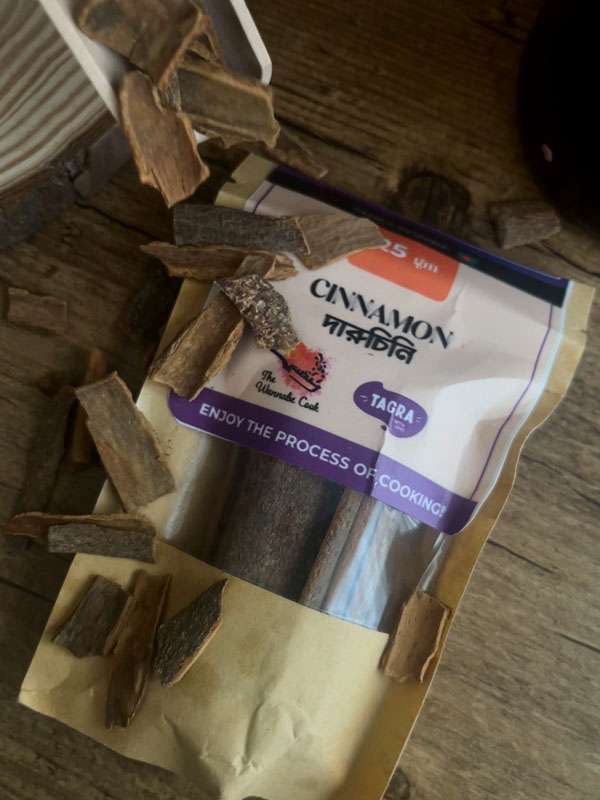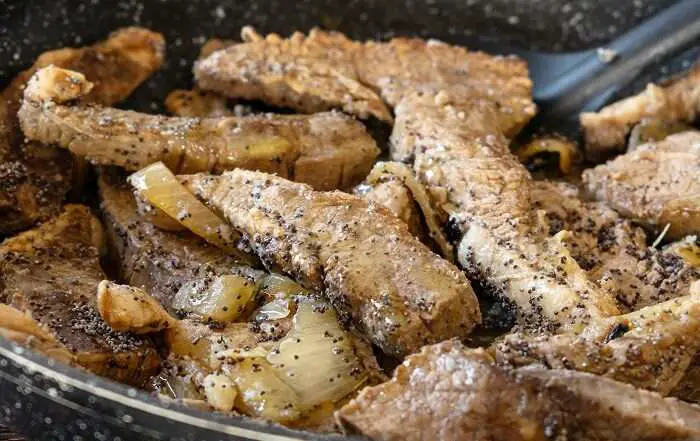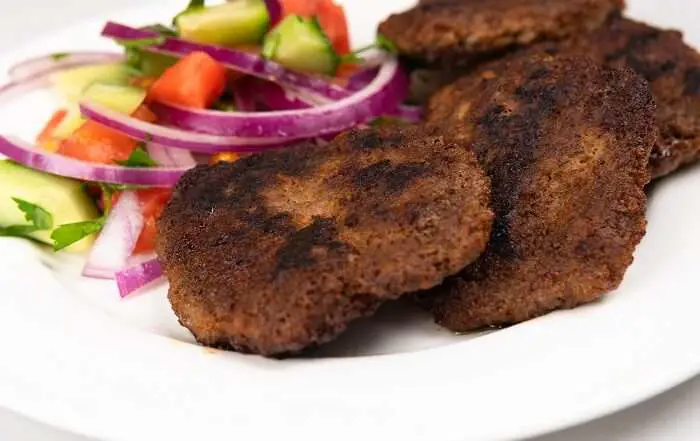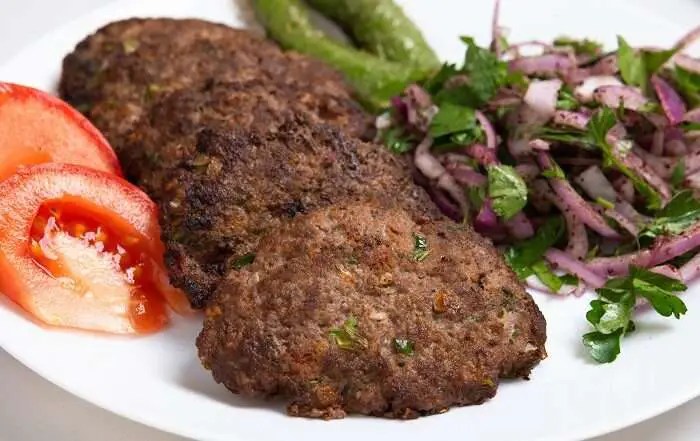Cinnamon is an aromatic spice that comes from the bark of a Southeast Asian tree. The bark is peeled and dried and is often ground into powder, but is also used in rolled strips. It is used in both sweet and savory foods. This spice comes from the Cinnamon tree (there are dozens of species of this tree), which are small evergreens that contain aromatic bark and leaves. These trees can grow to a height of 66 feet, although most are regularly trimmed and kept as groups of bushes in order to make cultivation of the cinnamon bark easier. The cinnamon tree produces yellowish-green flowers and a small berry fruit.
Here are some key points about the origin of cinnamon:
Ancient Use: Cinnamon has been used since ancient times, dating back over 4,000 years. It was highly prized in ancient Egypt and was used in embalming rituals and as a flavoring agent.
South Asia: The true cinnamon, known as Ceylon cinnamon (Cinnamomum verum or Cinnamomum zeylanicum), is native to Sri Lanka (formerly known as Ceylon). Sri Lanka has been a major producer and exporter of cinnamon for centuries.
Southeast Asia: Cassia cinnamon (Cinnamomum cassia), another species of cinnamon, is native to China and is also widely cultivated in Vietnam and Indonesia. Cassia cinnamon is more commonly found in North America and Europe.
Cultivation and Trade: Throughout history, cinnamon has been a valuable commodity traded along ancient spice routes. Arab traders brought cinnamon from South Asia to the Middle East and Europe, where it became highly sought after during the Middle Ages.
Dutch Control: During the colonial period, the Dutch East India Company (VOC) held a monopoly on the cinnamon trade in Sri Lanka and established control over cinnamon production. This monopoly led to conflicts and wars, highlighting the spice’s economic importance.
Modern Production: Today, Sri Lanka remains a major producer of true cinnamon (Ceylon cinnamon), exporting it to various parts of the world. Indonesia and China are significant producers of cassia cinnamon.
Different Types of Cinnamon
Ceylon Cinnamon: Known for its delicate flavor and aroma, often considered to be of higher quality.
Cassia Cinnamon: Has a stronger, more intense flavor and is more commonly found in supermarkets worldwide.
Cinnamon’s origins are rooted in South and Southeast Asia, where different species of cinnamon trees have been cultivated and harvested for millennia. The spice’s rich history includes its role in ancient trade routes and its continued popularity in culinary and medicinal applications worldwide.
Health Benefits of Cinnamon
Cinnamon is not only a popular spice known for its distinctive flavor and aroma but also offers various potential health benefits. Here are some of the key health benefits associated with cinnamon:
Antioxidant Properties: Cinnamon is rich in antioxidants such as polyphenols. These compounds help protect the body from oxidative stress caused by free radicals, which may contribute to aging and various chronic diseases.
Anti-inflammatory Effects: Cinnamon has been found to have anti-inflammatory properties, which can help reduce inflammation in the body. Chronic inflammation is linked to conditions like heart disease, diabetes, and certain types of cancer.
Improves Insulin Sensitivity: Cinnamon may help improve insulin sensitivity and lower blood sugar levels. This can be beneficial for people with insulin resistance or type 2 diabetes. It does this by increasing insulin sensitivity and helping insulin to transport glucose out of the bloodstream and into cells for energy.
Lowers Blood Sugar Levels: Cinnamon has been shown to lower fasting blood sugar levels and improve glucose metabolism, which can help stabilize blood sugar levels after meals.
Antimicrobial Properties: Cinnamon has natural antimicrobial properties that may help inhibit the growth of bacteria and fungi. This makes it useful for preserving food and as a natural food preservative.
Heart Health: Cinnamon may have beneficial effects on heart health by reducing risk factors for heart disease, such as high cholesterol levels and high blood pressure. It may also improve circulation and reduce inflammation in blood vessels.
Neuroprotective Effects: Some studies suggest that cinnamon may have neuroprotective effects and could potentially help protect against neurodegenerative diseases like Alzheimer’s and Parkinson’s diseases.
Digestive Health: Cinnamon can aid in digestion by reducing gas, bloating, and indigestion. It may also help alleviate stomach ulcers and promote healthy gut function.
Weight Management: While more research is needed, some studies suggest that cinnamon may help with weight loss by regulating blood sugar levels and improving insulin sensitivity, which can lead to reduced appetite and cravings.
Skin Health: Cinnamon has been used traditionally in skincare for its antimicrobial properties. It may help fight acne-causing bacteria and improve overall skin health.
Fun Facts
Here are some fun and interesting facts about Cinnamon:
Ancient Spice: Cinnamon has been used since ancient times, dating back over 4,000 years. It was highly prized in ancient Egypt and mentioned in ancient Chinese texts and the Bible.
Spice Route: Cinnamon was one of the most sought-after spices in ancient times and was traded along the legendary Spice Route that connected Asia, Africa, and Europe.
Botanical Origin: Cinnamon comes from the inner bark of trees belonging to the genus Cinnamomum. There are several species of cinnamon trees, with Cinnamomum verum (Ceylon cinnamon) and Cinnamomum cassia (cassia cinnamon) being the most common.
Medicinal Use: In ancient times, cinnamon was considered a symbol of wealth and luxury. It was used in perfumes, incense, and as a gift to monarchs and gods.
Symbol of Wealth: Bay leaves are known for their insect-repellent properties. They can be placed in pantries or storage containers to deter insects such as ants, moths, and cockroaches.
Aphrodisiac: Cinnamon has been historically considered an aphrodisiac and was used to enhance love potions and as a romantic spice.
Modern Uses: Besides culinary uses, cinnamon is used in perfumes, cosmetics, and even in some pharmaceutical preparations due to its aromatic and medicinal properties.
Popular Spice: Cinnamon is one of the most popular spices worldwide and is used in a wide variety of dishes, from sweet desserts to savory dishes like curries and stews.
Use of Cinnamon in Cooking
Cinnamon is a versatile spice that adds warmth, sweetness, and depth to both sweet and savory dishes. Here are some common and delicious uses of cinnamon in cooking:
In summary, cinnamon is a versatile spice used in a wide range of dishes worldwide, from sweet desserts to savory stews and beverages. It’s warm and sweet flavor profile makes it a popular choice in both traditional and modern cuisine.
Level 1: Using Cinnamon as a Natural Remedy for Immune Support
Cinnamon can be used in various natural remedies to potentially support immune function, primarily due to its antioxidant, anti-inflammatory, and antimicrobial properties. Here are some simple ways to incorporate cinnamon into natural remedies for immune support:
Cinnamon Honey Tea: Steep the cinnamon stick or ground cinnamon in hot water for 10-15 minutes. Stir in raw honey to taste, if desired. Drink the cinnamon tea regularly to enjoy its antioxidant and antimicrobial benefits. Honey also provides additional soothing properties.
Cinnamon and Turmeric Golden Milk: In a small saucepan, heat the milk over medium heat. Whisk in the cinnamon, turmeric, ginger, and black pepper. Heat the mixture until steaming but not boiling, stirring occasionally. Remove from heat and sweeten with honey or maple syrup, if desired. Enjoy this comforting golden milk for its immune-supporting and anti-inflammatory properties!
Cinnamon Citrus Immune Boosting Smoothie: Blend orange juice, water (or coconut water), ground cinnamon, grated ginger, frozen fruit, and greens until smooth. Add ice cubes if desired and blend until well combined. Pour into a glass and enjoy immediately for a refreshing and immune-supporting smoothie.
Cinnamon and Garlic Immune Boosting Soup: In a large pot, bring the broth to a simmer over medium heat. Add minced garlic, ground cinnamon, turmeric, cumin, and cayenne pepper (if using). Simmer the soup for 10-15 minutes to allow the flavors to meld together. Season with salt and pepper to taste. Serve hot, optionally squeezing fresh lemon juice into each bowl for added vitamin C and flavor.
Level 2: Using Cinnamon in Dinner Dishes
Sweet Potato and Black Bean Chili
Heat olive oil in a large pot or Dutch oven over medium heat. Add diced onion and cook until softened, about 5 minutes. Add minced garlic and cook for 1 minute until fragrant. Stir in diced sweet potatoes and red bell pepper. Cook for 5 minutes, stirring occasionally. Add black beans, diced tomatoes (with their juices), broth, chili powder, ground cinnamon, ground cumin, salt, and pepper. Stir to combine.
Bring the chili to a boil, then reduce the heat to low. Cover and simmer for 20-25 minutes, or until the sweet potatoes are tender. Taste and adjust seasoning if needed. If the chili is too thick, add more broth or water as desired. Serve the sweet potato and black bean chili hot, garnished with chopped cilantro and a dollop of sour cream or Greek yogurt if desired.
Moroccan-Inspired Chicken Tagine
Season chicken thighs with salt and pepper. Heat olive oil in a large skillet or Dutch oven over medium-high heat. Sear the chicken thighs, skin-side down, until golden brown and crispy, about 5 minutes per side. Remove and set aside. In the same skillet, add sliced onion and cook until softened, about 5 minutes. Add minced garlic, ground cinnamon, ground cumin, ground coriander, ground ginger, and ground turmeric. Cook for 1-2 minutes until fragrant. Pour in chicken broth and scrape up any browned bits from the bottom of the skillet. Return the chicken thighs to the skillet. Add chopped dried apricots and green olives. Bring the mixture to a simmer, then cover and cook over low heat for 30-35 minutes, or until the chicken is cooked through and tender. Taste and adjust seasoning if needed. Garnish with chopped parsley before serving. Serve the Moroccan-inspired chicken tagine hot, with couscous or rice on the side!
Stuffed Cabbage Soup
Cook ground round, onion, salt, and pepper in a small Dutch oven or large saucepan until meat is no longer pink, about 5 minutes. Stir in garlic and cinnamon; cook 1 minute. Stir in consommé and tomato sauce; bring to a low boil. Stir in cabbage, carrots, rice, brown sugar, Worcestershire, and bay leaf. Return to a boil; reduce heat to low, cover and simmer until rice is tender, about 25 minutes. Remove from heat; let stand, uncovered, 15 minutes. Discard bay leaf; stir in lemon and dill. Serve garnished with dill sprigs and lemon wedges.
Baked Ham with Honey-Chipolte Glaze
Preheat oven to 325°. Place ham on a rack in a roasting pan. Using a sharp knife, score surface of ham with 1/2-in.-deep cuts in a diamond pattern. Bake, uncovered, 1-1/2 hours. Meanwhile, for glaze, in a small saucepan, mix brown sugar, honey, vinegar and ginger ale. Bring to a boil; cook until mixture is reduced by half, about 15 minutes. Stir in remaining ingredients. Reduce heat; simmer, uncovered, 5 minutes. Remove from heat. Reserve 1 cup mixture for sauce; keep warm. Brush ham with some of the remaining glaze. Bake, uncovered, until a thermometer reads 140°, about 30 minutes, brushing twice with additional glaze. Serve with reserved sauce.





